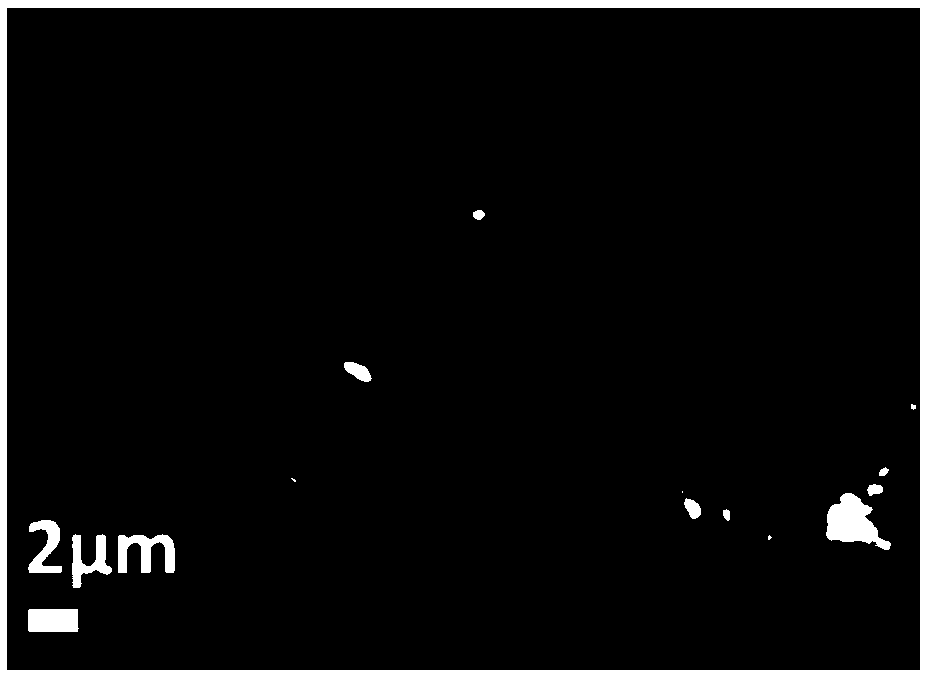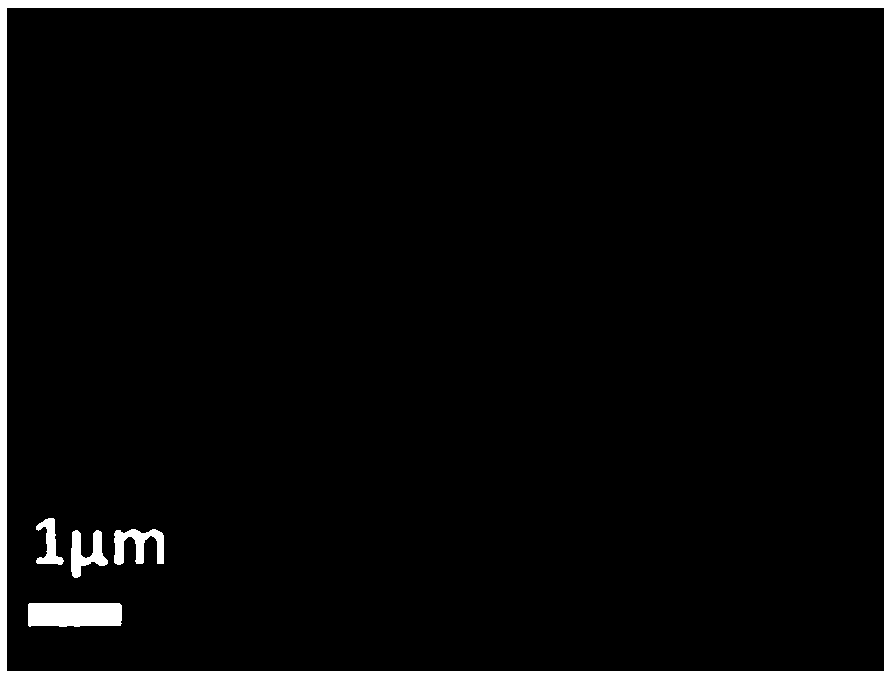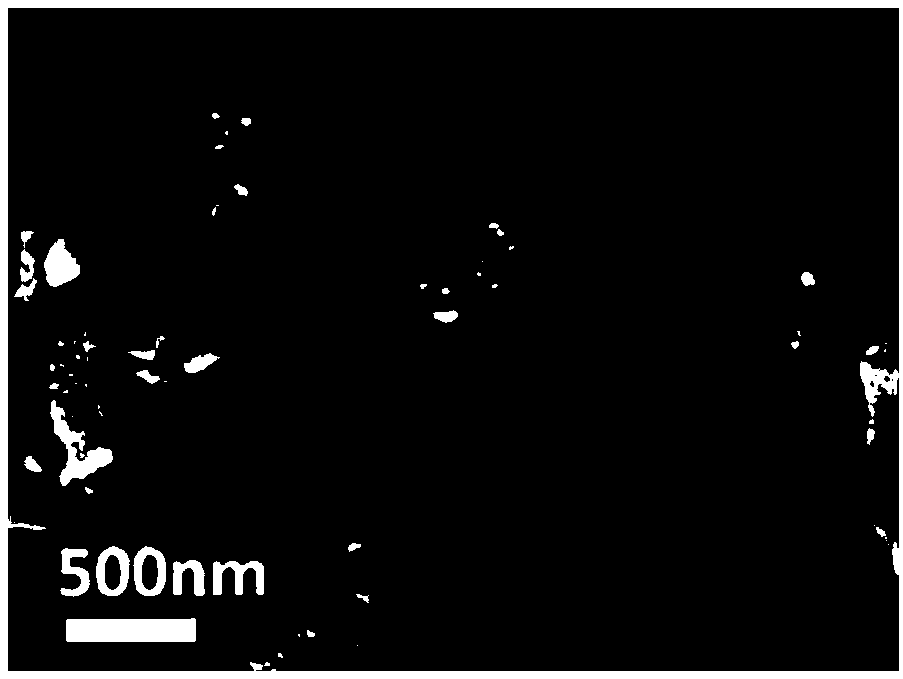Catalyst for photocatalytic decomposition of water to produce hydrogen and preparation method thereof
A photocatalysis and catalyst technology, applied in the field of materials science, can solve the problems of unrealization, low cost and low output, and achieve the effect of low cost, high hydrogen performance and high specific surface area.
- Summary
- Abstract
- Description
- Claims
- Application Information
AI Technical Summary
Problems solved by technology
Method used
Image
Examples
Embodiment 1
[0065] A WN / TiO with Nanofiber Morphology 2 A composite material prepared by a method comprising the steps of:
[0066] (1), preparation of WN
[0067] Add 2.48g of phosphotungstic acid into 40ml of deionized water, stir to dissolve, add 3.3g of 2-methylimidazole, adjust the pH to 4-5 with 1M HCl aqueous solution, then transfer to a 50°C oil bath, heat and stir for 6h, and then Control the rotating speed at 8000r / min and centrifuge for 5min, and control the temperature of the obtained precipitate at 70°C for drying to obtain a W-containing precursor;
[0068] Then the W-containing precursor obtained above was placed in NH 3 In the atmosphere, control the heating rate of 5°C / min to 600°C for calcination for 3h for nitriding, and then naturally cool to room temperature to obtain WN;
[0069] (2), the 0.1gWN and 0.1gTiO obtained in step (1) 2 Disperse in 8ml DMSO, and ultrasonically peel for 60min under the control power of 300W to obtain WN and TiO 2 DMSO dispersion liquid,...
Embodiment 2
[0094] A WN / TiO with Nanofiber Morphology 2 A composite material prepared by a method comprising the steps of:
[0095] (1), preparation of WN
[0096] Add 2.48g of phosphotungstic acid into 40ml of deionized water, stir to dissolve, add 3.3g of 2-methylimidazole, adjust the pH to 4-5 with 1M HCl aqueous solution, then transfer to a 50°C oil bath, heat and stir for 6h, and then Control the rotating speed at 8000r / min and centrifuge for 5min, and control the temperature of the obtained precipitate at 70°C for drying to obtain a W-containing precursor;
[0097] Then the W-containing precursor obtained above was placed in NH 3 In the atmosphere, control the heating rate of 5°C / min to 600°C for calcination for 3h for nitriding, and then naturally cool to room temperature to obtain WN;
[0098] (2), the 0.1gWN and 0.05gTiO obtained in step (1) 2 Disperse in 8ml DMSO, and ultrasonically peel for 60min under the control power of 300W to obtain WN and TiO 2 DMSO dispersion liquid...
Embodiment 3
[0107] A WN / TiO with Nanofiber Morphology 2 A composite material prepared by a method comprising the steps of:
[0108] (1), preparation of WN
[0109] Add 2.48g of phosphotungstic acid into 40ml of deionized water, stir to dissolve, add 3.3g of 2-methylimidazole, adjust the pH to 4-5 with 1M HCl aqueous solution, then transfer to a 50°C oil bath, heat and stir for 6h, and then Control the rotating speed at 8000r / min and centrifuge for 5min, and control the temperature of the obtained precipitate at 70°C for drying to obtain a W-containing precursor;
[0110] Then the W-containing precursor obtained above was placed in NH 3 In the atmosphere, control the heating rate of 5°C / min to 600°C for calcination for 3h for nitriding, and then naturally cool to room temperature to obtain WN;
[0111] (2), the 0.1gWN and 0.03gTiO obtained in step (1) 2 Disperse in 8ml DMSO, and ultrasonically peel for 60min under the control power of 300W to obtain WN and TiO 2 DMSO dispersion liquid...
PUM
 Login to View More
Login to View More Abstract
Description
Claims
Application Information
 Login to View More
Login to View More - R&D
- Intellectual Property
- Life Sciences
- Materials
- Tech Scout
- Unparalleled Data Quality
- Higher Quality Content
- 60% Fewer Hallucinations
Browse by: Latest US Patents, China's latest patents, Technical Efficacy Thesaurus, Application Domain, Technology Topic, Popular Technical Reports.
© 2025 PatSnap. All rights reserved.Legal|Privacy policy|Modern Slavery Act Transparency Statement|Sitemap|About US| Contact US: help@patsnap.com



